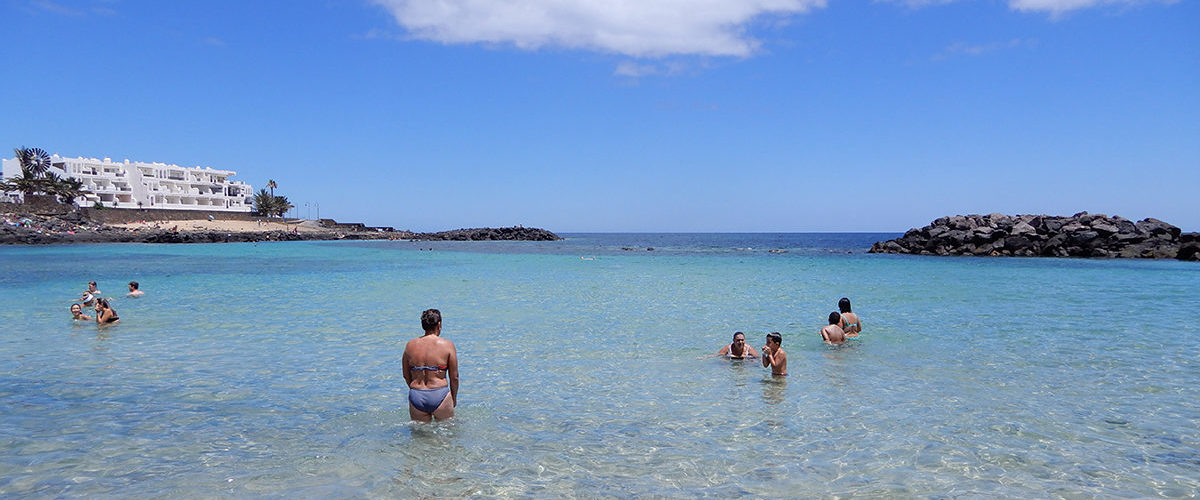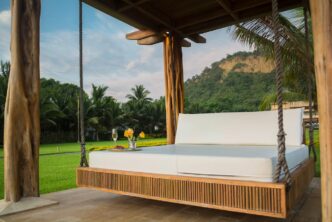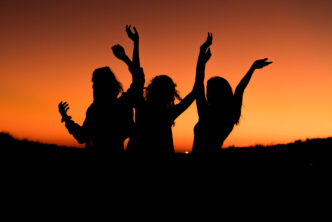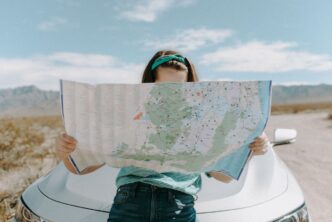Liz Ratcliffe takes her first trip to Lanzarote. Won over by the island’s geothermal charms she’s already thinking of going back.
I wasn’t sure what sort of week I was going to spend in Lanzarote. I had heard the sayings: ‘Lanzarote – Lanzagrotty’ – but grotty it certainly was not and I had a fabulous time: visiting volcanoes, swimming in clear blue seas with fish everywhere, and going underground into fissures left by lava flows.
We decided to centre our holiday in one of the less touristy places – Costa Teguise, just up the coast from the capital, Arricife. The southern end of Costa Teguise was designed by artist, Cesar Manrique, and comprises low, white-washed dwellings with blue or green balconies. The main road into the resort is lined with squat palm trees and flanked by hotels and apartment blocks. The road running down to the beach has many restaurants and bars and a handy supermarket too.
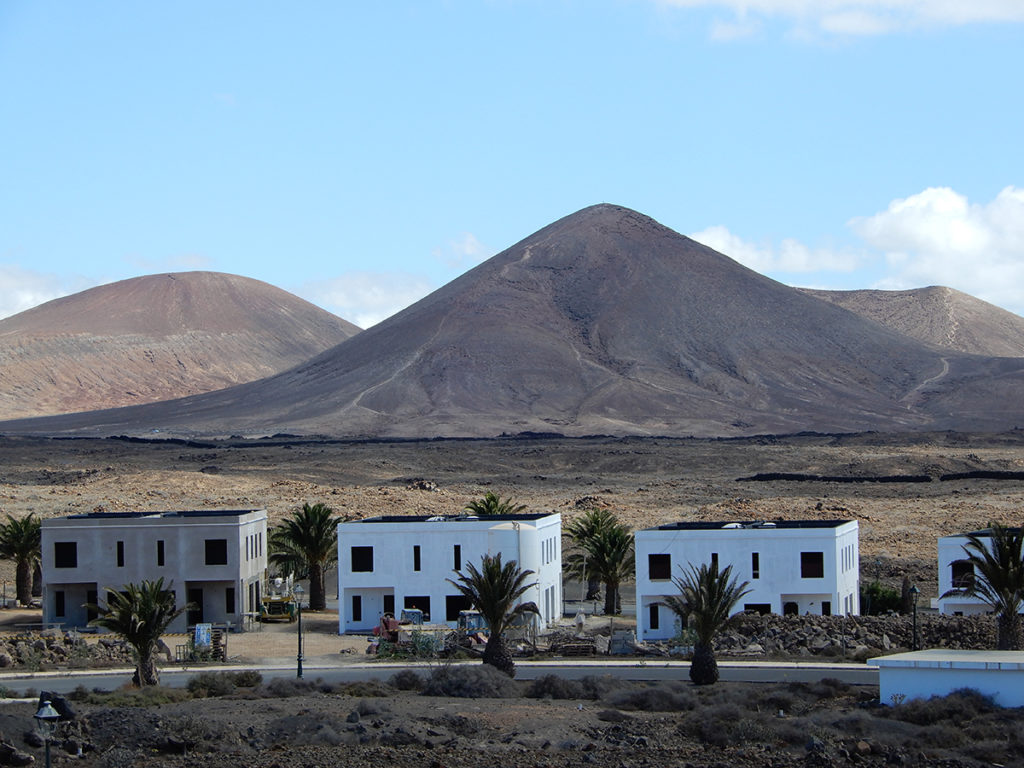
Costa Teguise has a couple of lovely, small beaches with a promenade joining them, where you can enjoy a drink, book a scuba lesson and even have your feet pampered by little fish that eat away your dead skin. I opted for swimming in the sea – which was wonderfully clean and clear, and full of inquisitive fish – big and small! There are many bars and restaurants along the promenade and a host of gift shops selling obligatory fridge magnets, colourful beach towels, and snorkel masks.

Venturing out of Costa Tequise, you can either follow the steel-blue sea along the coast or meander through the bare, beige-hills and black fields of lava and craters. No wonder many of the blockbuster movies are filmed in Lanzarote or on its sister island, Fuerta Ventura. It was in the Tertiary era, over 20 million years ago, when huge volumes of basalt magma broke through the fault lines in the Earth’s crust to form these two oldest islands in the archipelago.
We booked a day-long tour to get up close and personal with the volcanoes. Venturing out of Costa Teguise, we first encountered a landscape speckled with pits containing vines, surrounded by layered, semi-circular walls of grey stone. As the soil is so black, the green vines really stand out. This structure absorbs moisture from on-shore winds at night, and during the day the accumulated water gradually drips down to the roots of the vines. Of course, being in ‘wine country’ we had to stop off for the necessary wine tasting and I must admit that the red was particularly nice.

Back on the air-conditioned, double-decker coach and on towards Timanfaya National Park. The landscape changes again with a sea of black lava that extends for miles. Towering above it in the distance are mountains, many with craters at the top. This really is like being an a science fiction movie or lunar-scape, where there is not a single tree or shrub.
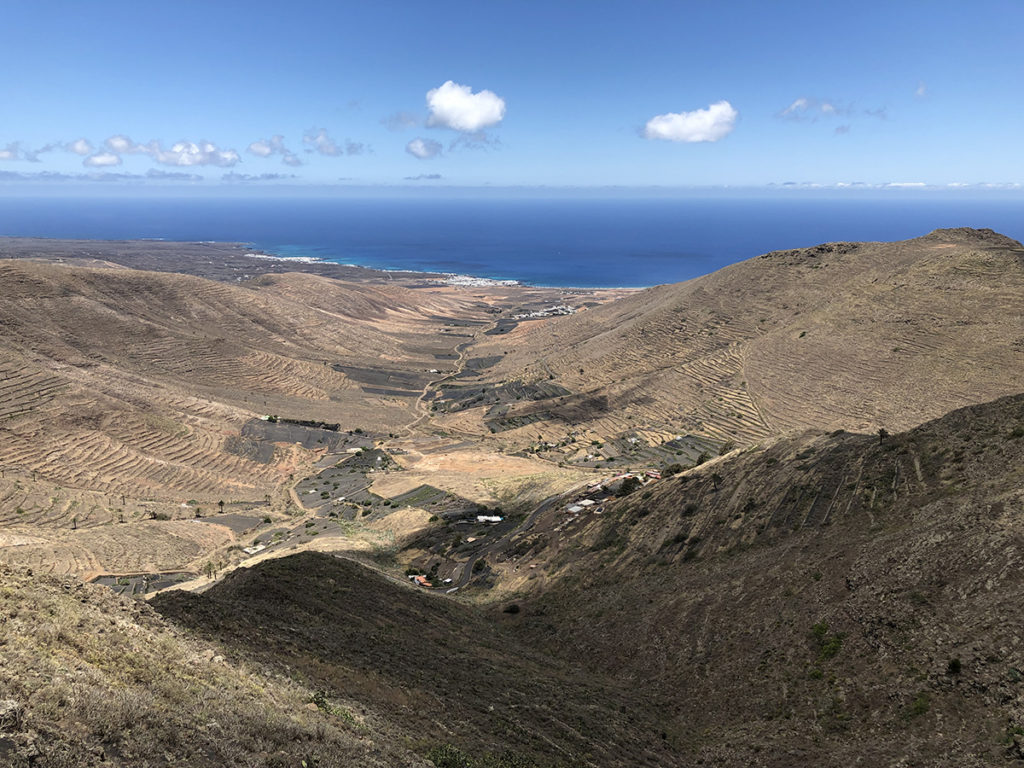
The most violent volcanic eruptions in Lanzarote island lasted six years, from 1730 to 1736, when almost a quarter of the island was buried, leaving behind the biggest lava field in the world. This was one of the worst catastrophes recorded, with many places buried by clouds of ash or devastated by streams of lava.
At this point in our coach journey, we were played the diary entry of a priest who witnessed the eruptions of 1730, followed by a stop of music from Wagner to heighten the drama. Along the winding road through this region, there are 30 cones of the Montanas del Fuego. The volcanoes appear to fluoresce, which is caused by the various minerals in the lava.
There were various displays to show the power of the underground geothermal energy, with park rangers digging gravel and dispersing it to tourists to demonstrate its heat, throwing kindling into holes in the ground to watch it set alight, or pouring water down pipes to see steam shoot up geyser-style with “oohs and ahhs” a-plenty. There was even a large pit over which chicken was being cooked on what was like a huge open air BBQ for the adjoining restaurant , again, heated by the geothermal forces below. The views from this vantage point are absolutely spectacular – volcanoes in the foreground, traversing down to the glorious blue sea at the coast.
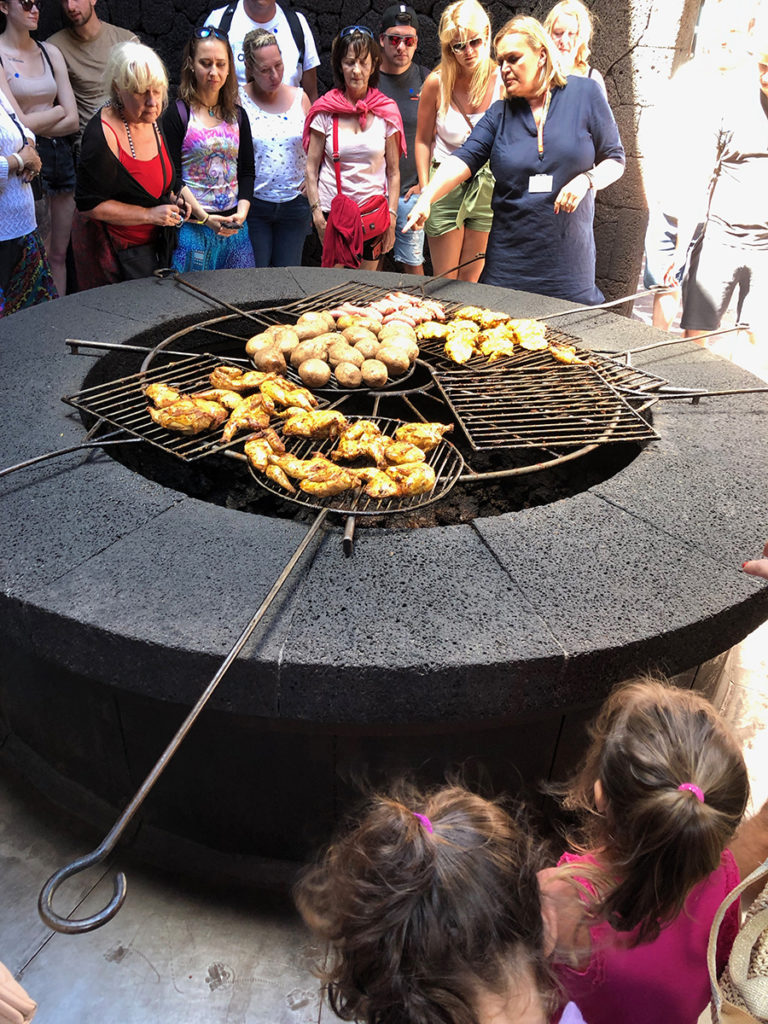
Having spent a good deal of time lounging around the pool or travelling around the island by coach, we decided to see the island from the water. We booked a sunset cruise with the chance of seeing dolphins and whales. First we spent the day at Puerto del Carmen, where we caught a boat in the evening. This is a real tourist hot-spot for the island – full of shops, bars and restaurants. It has some long sandy beaches, and places where you can hire jet-skis or try your hand at paddle boarding or wind surfing.
We stopped at a British Pub and had some lunch and a few glasses of beer, before heading off to our boat. Fortunately, it was a calm day out at sea, and our hosts made us very welcome, with information about the locality and some great music to enjoy the views with. Spotting dolphins is no easy task, with every wave masquerading as these wonderful creatures. Alas, after hunting for a good two hours, we failed to spot anything other than a few gulls overhead. Our disappointment was quickly forgotten, however, as we returned to a glorious sunset over the volcanic craters, enjoying a glass of champagne and delicious local cake.
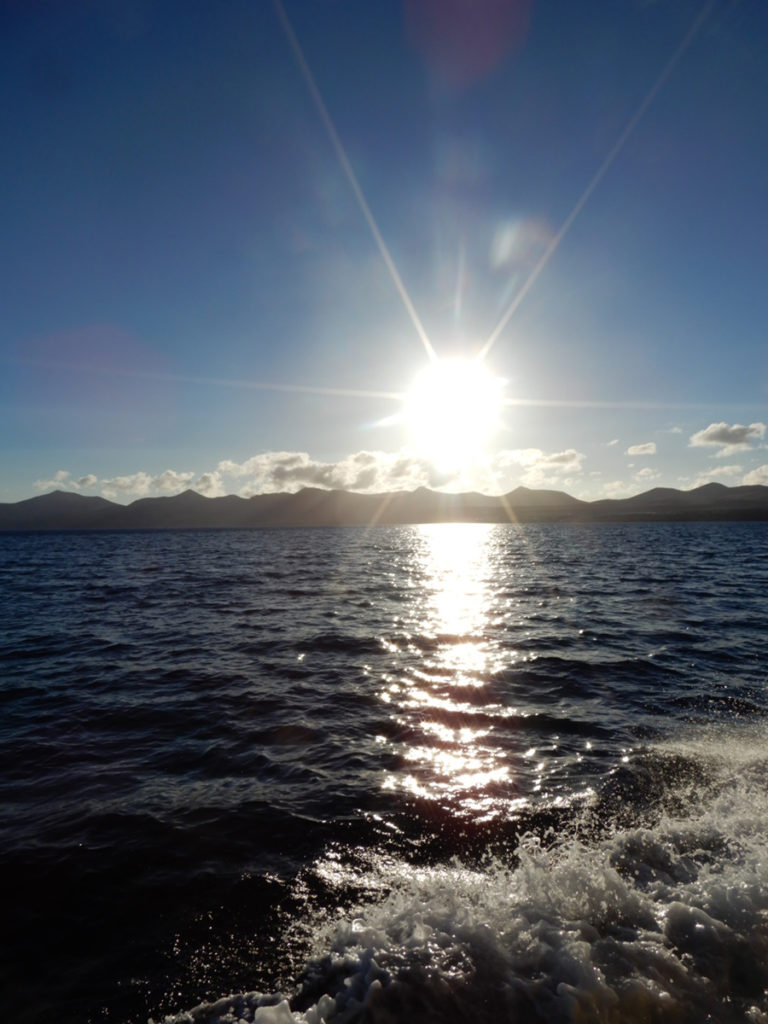
Perhaps the weirdest and most wonderful day of the holiday was our trip north of the island to Jameos del Agua and Cueva de los Verdes. This is part of the volcanic tunnel system that runs from Montana de Corona, which erupted about 4000 years ago, out into the Atlanta Ocean.
Jameo is the name for the cavity produced when the roof of a volcanic tunnel collapses. Again, artist Manrique had a hand to play in this popular tourist attraction. You go down steps into the jameo chico (small cave) to a bar full of lush, green foliage with soft music playing. Narrow paths then take you down to a salt water lake which is home to a unique variety of crab, which are white, blind and without shells. The water has a green tinge to it, and the rocks underneath are splattered with blobs of white, which turned out to be all these little crabs.
On the other side of the lake, landscaped terraces lead up to ground level. Hollywood legend, Rita Hayworth considered this the ‘Seventh Wonder of the World’. The roof of the chamber here is open so wide that the sun can penetrate down into the cave unhindered. This makes it the perfect – it bizarre – spot for a spectacular pool surrounded by palm trees. And, in the next lava tube, there is an auditorium boasting fantastic acoustics, where concerts are held.
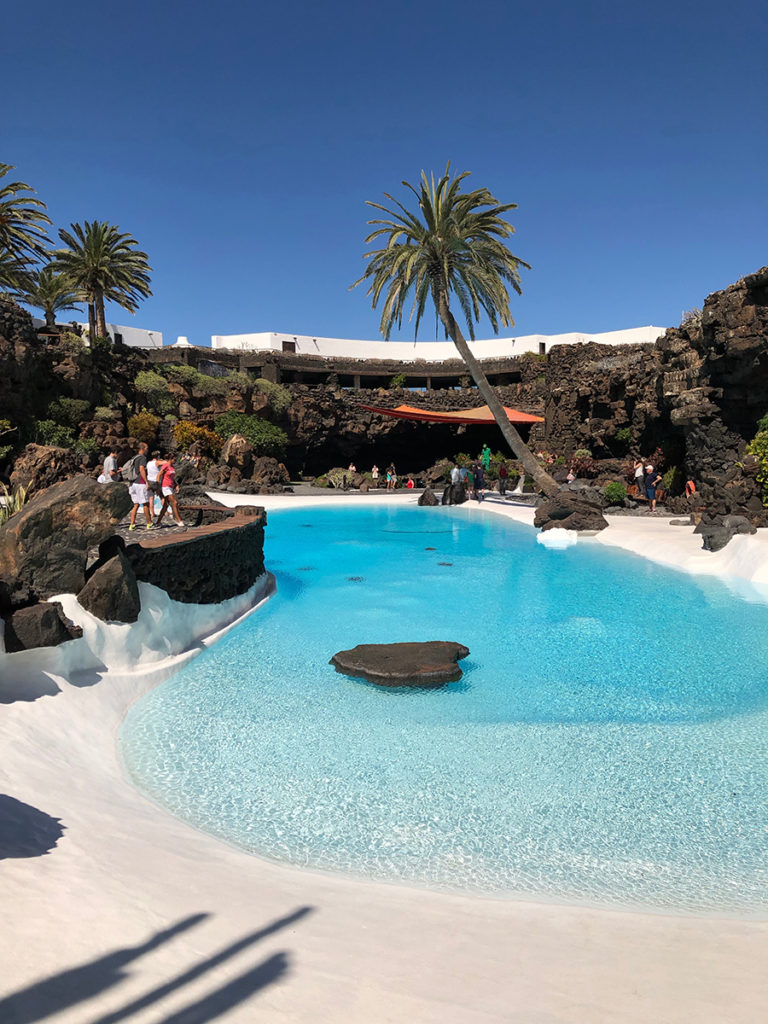
The other tourist attraction in this area is the Cueva de los Verdes, seems like a journey into the bowels of the earth. This is a lava tunnel, formed when Monte Corona erupted. As the hot lava flowed down to the sea, it cooled quickly at the surface, while the hot magma beneath continued on its course. When the eruption stopped, the magma left behind galleries and caverns at various levels. These have served as hiding places for locals from pirate attacks. The cave opens into a vast auditorium, and how they managed to get a piano in there is anyone’s guess! And there is a surprise at the end of the chamber, which I will not spoil for you if you decide to visit.
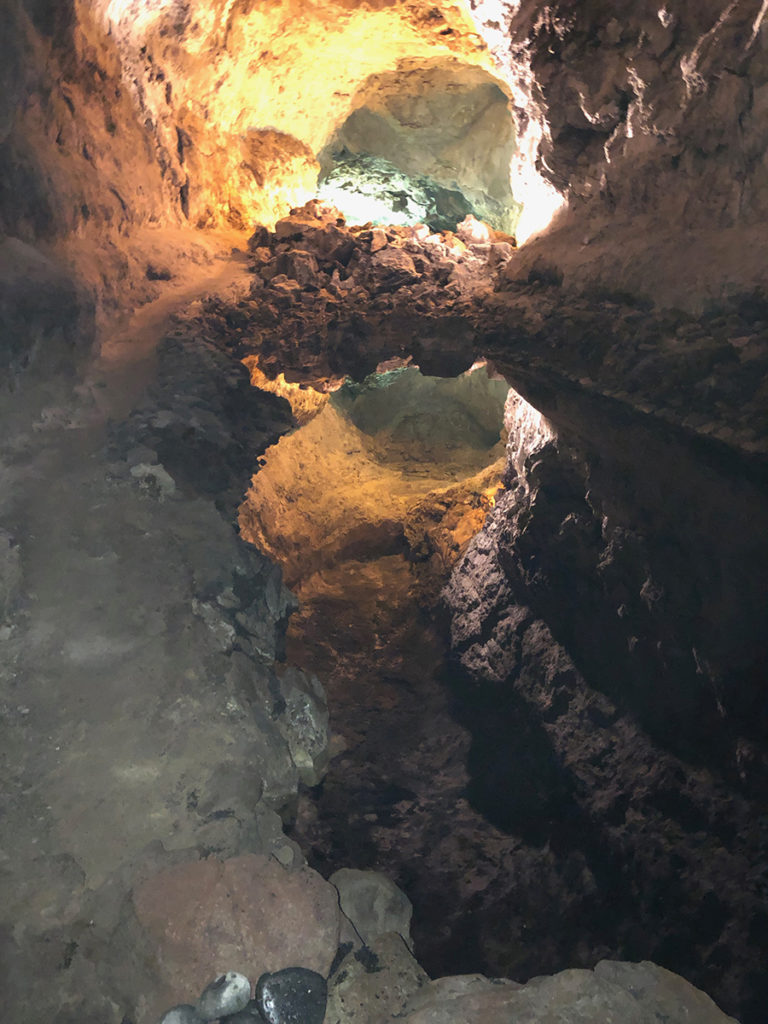
Lanzarote really does hold something for everyone as a holiday destination. There are beautiful beaches, with lots of water sports to try. There are walks all over the island, through agricultural and volcanic regions, as well as plenty of places to see Manrique’s artistic impact on the island.
I will go back to Lanzarote again – away from the tourist hot spots, it really is a very chilled atmosphere and I doubt you will find anywhere that is such good value for money too.

